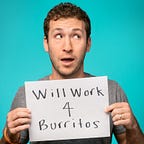America’s Heroin Epidemic vs Bolivia
When we were at Lake Titicaca I read a book called Dreamland about the current heroin epidemic consuming the United States.
In it the author painted the picture of a town called Portsmouth in southern Ohio, a town that is at the very epicenter of the heroin problem.
Portsmith is a former factory town that has been in decline for 25 years in the face of a globalized economy and cheaper labor overseas.
During the 1990s as the factories closed, they were replaced by the nation’s first pill mills where callous doctors primed the nation’s heroin pump with unending quantities of Oxycontin.
Oxy addicts from Portsmouth, Oxy addicts from neighboring counties and even Oxy addicts from neighboring states would line up around the block of the clinic, waiting in line for hours to get their fix.
At the height of the Oxy boom, the whole town practically became addicted.
Jobs disappeared. Community withered. Mainstreet died. Walmart moved in.
There were so many people addicted to Oxycontin that an entire black market economy emerged where pills not US dollars became the town’s currency. With Oxycontin you could buy anything from cars and big screens to diapers and laundry detergent.
The health of the population fell off a cliff.
As the author puts it, there were more pizza restaurants in the town than there were gyms in all of Ohio.
It was in every sense if the word a post-apocalyptic addict wasteland.
Yeah. Grim.
What is troubling about Portsmouth is that it is not an anomaly. Portsmouth is the Rustbelt. Portsmouth is Appalachia. Lost jobs, Walmart, pizza chains.
Portsmouth is emblematic of a giant swath of America that has been ignored, mocked and left behind. A place where its citizens justiably feel cheated out of life and understandably feel the populist pull of #makeamericagreatagain.
This image of the town stuck with me. I couldn’t shake it. It was just sad. The manufacturing jobs, the coal mine jobs — they aren’t coming back to towns like Porthsmouth.
Yet, as bleak as the prospects seem for the Porthsmouths all across the US, I sat on the bus and looked out the window and I saw a world that is far worse off.
30 minutes outside the capital of La Paz is a world of dusty unpaved roads, broken down cars and roving, skinny street dogs.
Empty red brick buildings filled with rubble and rebar hug the desert landscape. The light shines straight through the glassless windows in the buildings. Are they half built or dilapidated? North Korea or Detroit? It’s impossible to tell. I think half built. In perpetuity.
Bolivia is the poorest country in South America. It’s a country that is not looking to be great again. It’s simply hoping to reach the level of not horrible. And from all objective measures it seems to be making progress. Boosted by high oil prices the extreme poverty rate has declined by more than 40% over the past decade while the real minimum wage has increased by nearly 90%. Indeed it’s one of the few nations in the world where income inequality is actually declining.
And yet, a pizza chain, a Walmart — these are things that seem decades away in the parts of Bolivia we’re driving through.
I know it’s pointless to compare one country’s misery to another’s. Misery is misery, injustice is injustice, inequality is inequality no matter under which borders they lie.
Yet today I can’t help it. It’s too stark to deny. Our two worlds are very far apart and no matter how many problems we face at home, I feel very lucky to have been born in America.
